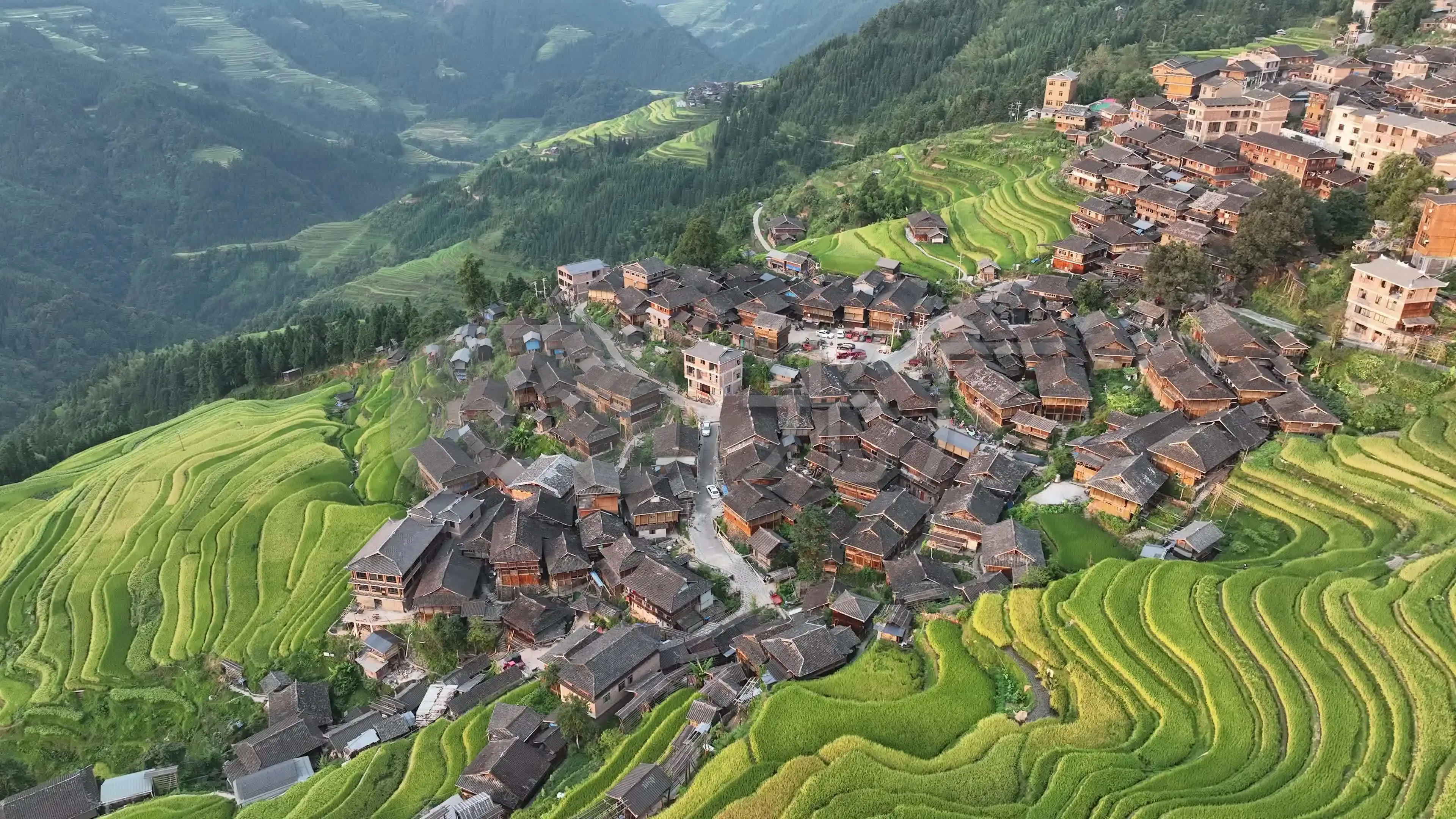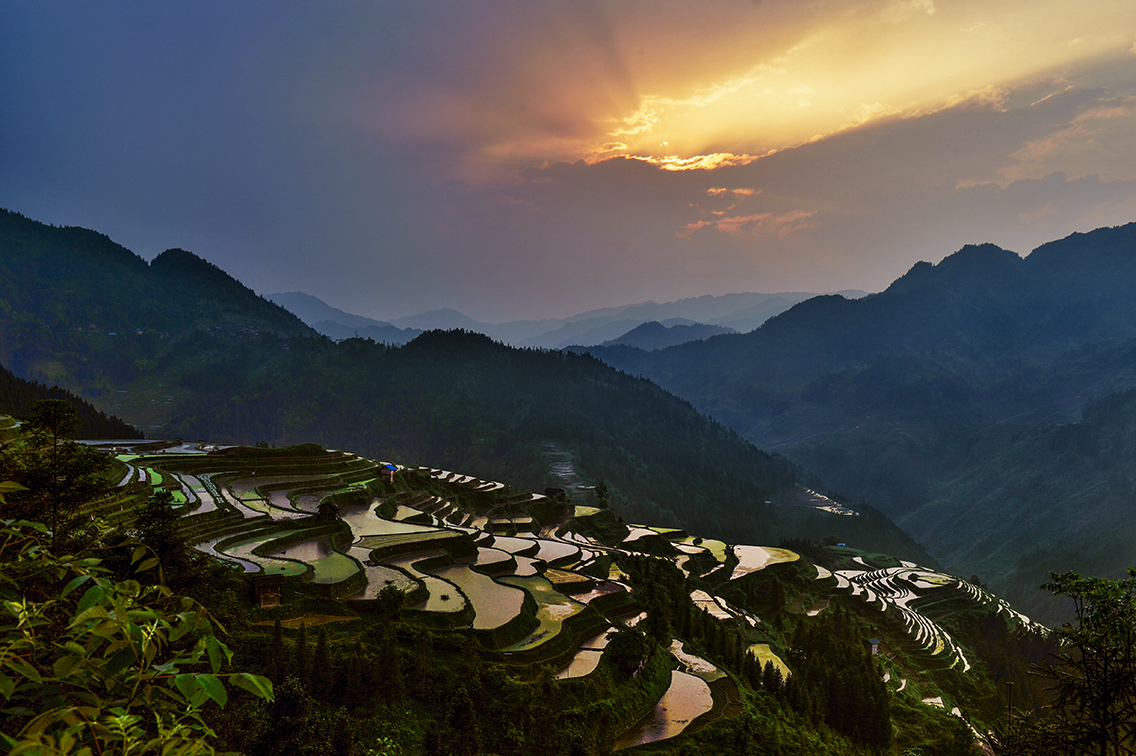



Jiabang Rice Terraces
The Jiabang Rice Terraces, located in Jiabang Township, Congjiang County, Guizhou Province, China, are a stunning example of terraced farming landscapes. Carved into the mountains by the local Miao community over centuries, these terraces cover nearly 10,000 acres and are renowned for their intricate patterns and breathtaking beauty. The terraces vary in size and shape, adapting seamlessly to the mountainous terrain, and are interspersed with traditional Miao villages, featuring unique wooden stilt houses. Throughout the year, the terraces offer diverse scenic views: in spring, they reflect the sky with flooded fields; in summer, they are lush green with growing rice; in autumn, they turn golden as the crops mature; and in winter, they may be dusted with snow, creating a serene landscape.
Information
Ticket price
Time
Location
Congjiang County, Qiandongnan Miao and Dong Autonomous Prefecture, Guizhou, China
View maps
More about the trip
Jiabang Rice Terraces: A Masterpiece of Agricultural Art
The Jiabang Rice Terraces, located in Jiabang Township, Congjiang County, Guizhou Province, China, are a stunning example of terraced farming landscapes. Carved into the mountains by the local Miao community over centuries, these terraces cover nearly 10,000 acres and are renowned for their intricate patterns and breathtaking beauty. The terraces vary in size and shape, adapting seamlessly to the mountainous terrain, and are interspersed with traditional Miao villages, featuring unique wooden stilt houses. It's a place where human ingenuity and natural beauty converge to create a truly spectacular sight.
What to See and Do
Seasonal Beauty: The terraces offer diverse scenic views throughout the year:
- Spring (April-May): The terraces are filled with water, reflecting the sky like silver ribbons, creating a shimmering, mirror-like effect. This is often considered the most beautiful time for photography.
- Summer (June-August): Lush green rice plants cover the terraces, creating a vibrant, verdant landscape.
- Autumn (September-October): The fields turn golden as the crops mature, offering a breathtaking golden harvest scene.
- Winter (November-March): The terraces may be dusted with snow, creating a serene and tranquil landscape.
Photography: The ever-changing beauty of the terraces provides endless opportunities for stunning landscape photography, especially during sunrise and sunset.
Explore Miao Villages: The terraces are interspersed with traditional Miao villages. You can wander through these villages, observe local life, and perhaps sample some local snacks or purchase handicrafts.
Observe Local Farming: Witness the traditional farming methods of the Miao people, who have adapted to the mountainous environment to cultivate rice for generations.
Best Time to Visit
The best time to visit depends on the scenery you wish to see: spring for the water reflections, summer for lush green, and autumn for golden hues. Avoid major Chinese public holidays to escape the crowds.
How to Get There
Jiabang Rice Terraces are located in Congjiang County. You can take a high-speed train to Congjiang Railway Station (从江站). From there, you will need to take a local bus or taxi to Jiabang Township. It might be best to arrange transportation with a local guide or tour operator, as the area is remote.
Travel Tips
Wear comfortable shoes: You'll be doing a lot of walking on uneven paths and steps.
Sun protection: Bring a hat, sunglasses, and sunscreen, especially during sunny days.
Respect local customs: Be mindful and respectful of the traditions and daily life of the Miao people.
Stay overnight: To fully experience the terraces, especially the sunrise and sunset, consider staying overnight in a local guesthouse.





